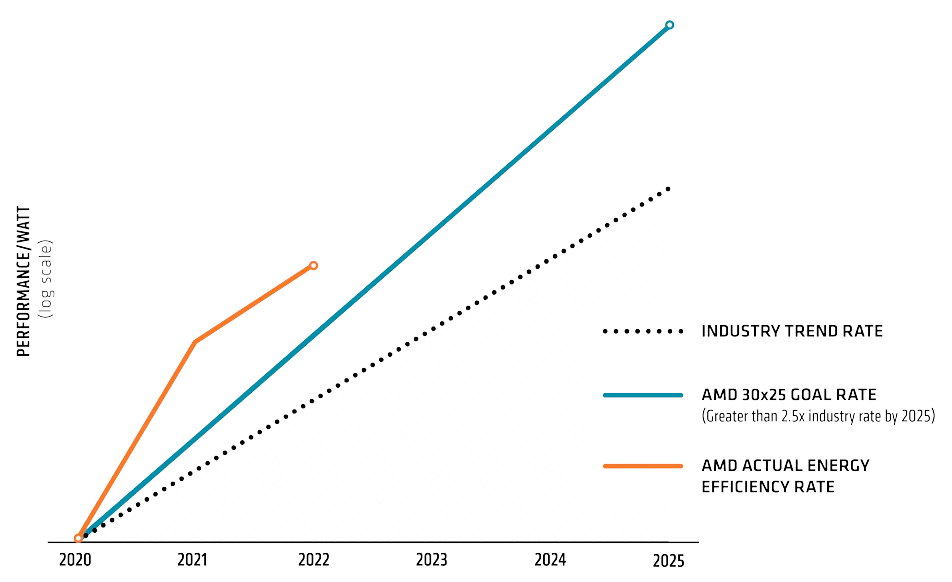AMD says it is on track to meet hugely ambitious data centre efficiency targtets under its AMD 30x25 programme -- under which it aims to reduce the power demands of its HPC and AI chips by 30x over five years.
The company has reached a 6.79x improvement over its 2020 baseline, AMD CTO Mark Papermaster said.
He pointed on May 3, 2022 to figures based on tests of an accelerated compute node powered by a 3rd Gen EPYC CPU and four Instinct MI250x GPUs. This combo was apparently able to do the same amount of work as a 2020-era setup using around 85% less energy.
AMD’s 30x25 initiative aims to make its high-performing computing CPUs and AI accelerators thirty times more efficient than they were in 2020 by 2025. This programme is the successor to AMD’s 25x20 efficiency drive, which similarly tried – and succeeded – to deliver a 25x improvement in CPU performance between 2014 and 2020.
Follow The Stack on LinkedIn
“Practically speaking, achieving the 30x goal means that in 2025, the power required for these AMD accelerated compute nodes to complete a single calculation will be 97% lower than in 2020,” said AMD CTO Mark Papermaster at the Future Compute event
“Getting there will not be easy. To achieve this goal means that we will need to increase the energy efficiency of an accelerated compute node at a rate that is more than 2.5x faster than the aggregate industry-wide improvement made during the period 2015-2020,” he added.

As can be seen on the (log scale) graph above, provided by AMD, progress is not linear; 2022’s achievement shows a clear fall-off from 2021. But as of now the AMD 30x25 target remains in sight.
The methodology behind AMD’s power efficiency drive has been validated by Dr Jonathan Koomey, originator of the eponymous law regarding the energy efficiency of computing systems.
In a canned statement, Koomey said of the AMD 30x25 initiative: “The energy efficiency goal set by AMD for accelerated compute nodes used for AI training and High-Performance Computing fully reflects modern workloads, representative operating behaviours and accurate benchmarking methodology.”
AMD makes much play of the potential for its 30x25 initiative to save 51 terawatt-hours of electricity by 2025 – assuming, that is, all HPC and AI platforms showed the same improvements (or used AMD’s chips).
In its 2021 corporate social responsibility report GPU maker Nvidia also makes much play of the energy efficiency of its products – boasting it has cut the training time of an AI model by 92% on a single server.
Intel has a similar energy efficiency initiative according to its 2021 CSR report, targeting 10x efficiency across all its CPUs by 2030. While this is less ambitious than the AMD 30x25 initiative on the face of it, AMD is targeting a much narrower - and therefore more optimisable - set of applications, while Intel is going for across-the-board improvements, covering server and client chips.









